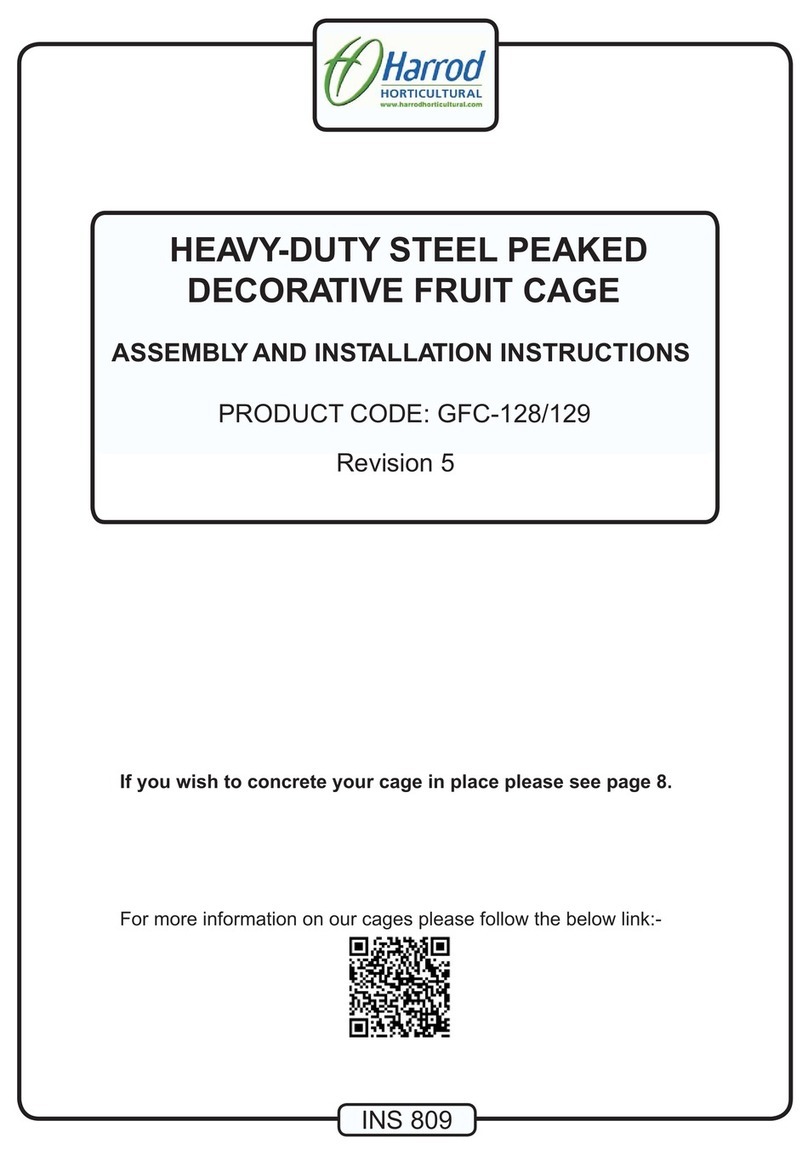
PAGE 6
DOMED FRUIT CAGE ASSEMBLY INSTRUCTIONS
26: To fix the 2m wide side
netting, start by cutting to
allow the net to wrap around
the door support upright. This
will allow the top edge of the
net to run along the top edge
of the horizontal support bars.
27: Wrap the cut section of the side
net around the door support upright
as described in step 24. Tie in place
using net ties ( ref :26) at the top and
the bottom of the upright and a couple
equally spaced in between. Secure
the top of the net along the horizontal
bars using net ties (approx four for
every 2.5m length).
28: Continue to unroll the side
netting all the way round the
perimeter of your cage, keeping it
as taught as possible, securing as
step 25. When corners are
encountered snip the bottom few
cms flush with the ground to allow
the net to neatly fold.
29: To finish the side net and to cover the
door, unroll about 30cm past the door and
cut vertically.
30: Fold the side net around
the catch side of the door and
hold securely with several
equally spaced net clips
(ref:25). A small cut can be
made in the net to allow the
catch to protrude cleanly.
22: Slide the fitted roof net down over
the finial and align the seams with the
curved bars. Using net ties (ref :26)
secure the net around the base of the
finial and also around the curved bars.
Trim off the ends of the ties and also
any untidy stray netting.
With the aid of at least three people lift
the unit(s) into place .
23: Bolt (ref 21,22) the curved roof
supports (ref 24) onto the connector
plate (ref:18,19,20). Tighten the bolts
using a 17mm spanner (fig 10).
fig 12fig 12
24. Place the assembled door frame in position and secure in by
joining the hinge blocks (Ref.8) as shown (fig 13) and tightening the
bolts with the 3mm allen key supplied and an 8mm spanner. Note as
the hinge blocks must spin on each other do not over tightening the
long bolt/nut through the bosses.
fig 13fig 13
25. Secure the latch in place by sliding it over
the latch block and inserting the latch inserts
as shown (fig 14). Tighten the bolts with the
3mm allen key supplied to hold in place. Note
the latch should not be over-tightened as it
must slide freely. Note the latch has one
longer side and this must be positioned on the
side you wish to open the door.
fig 14fig 14



























